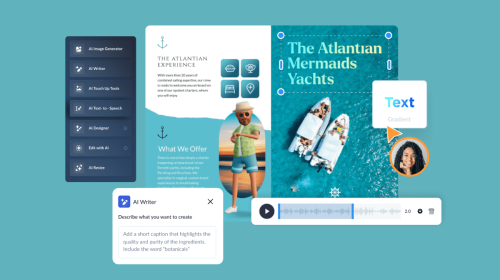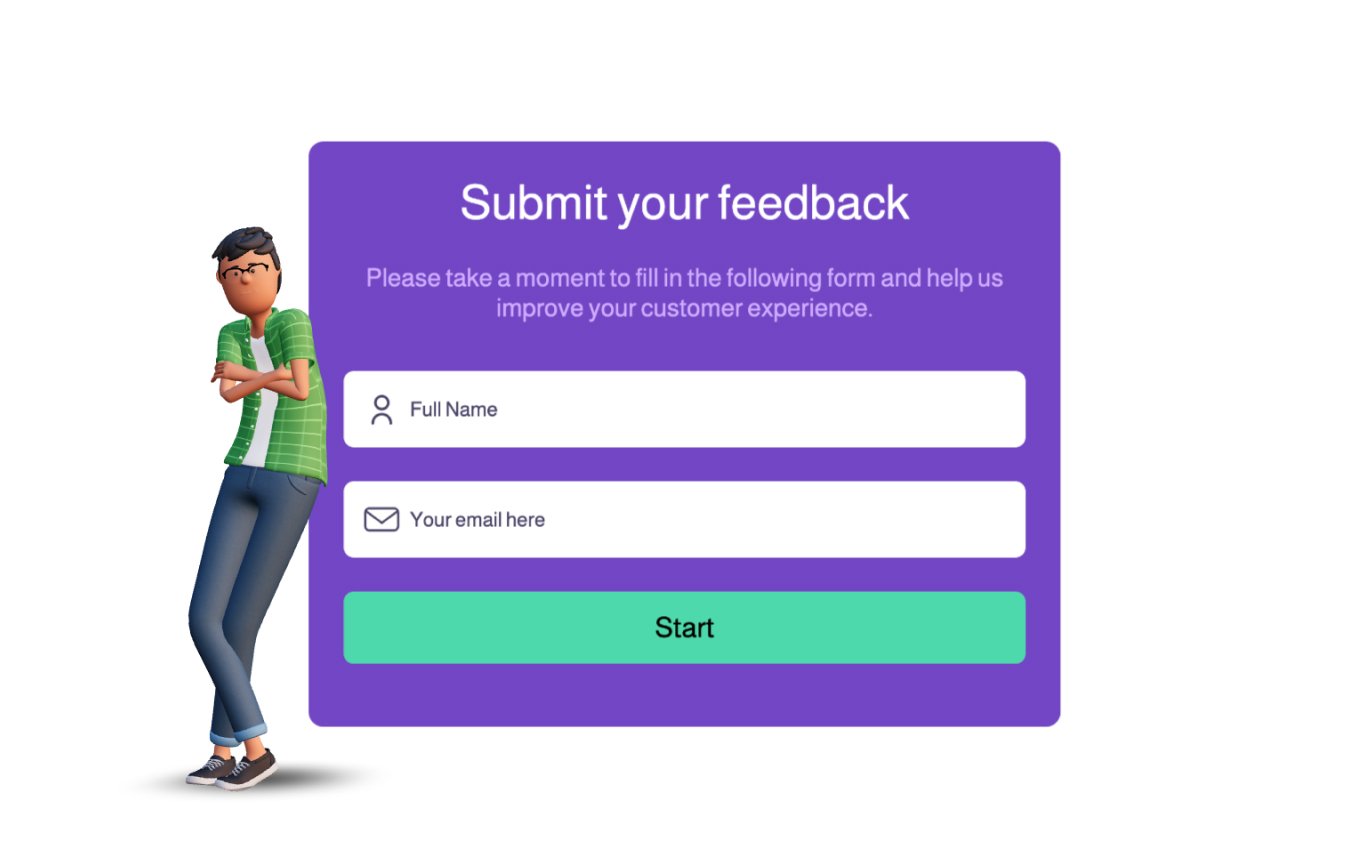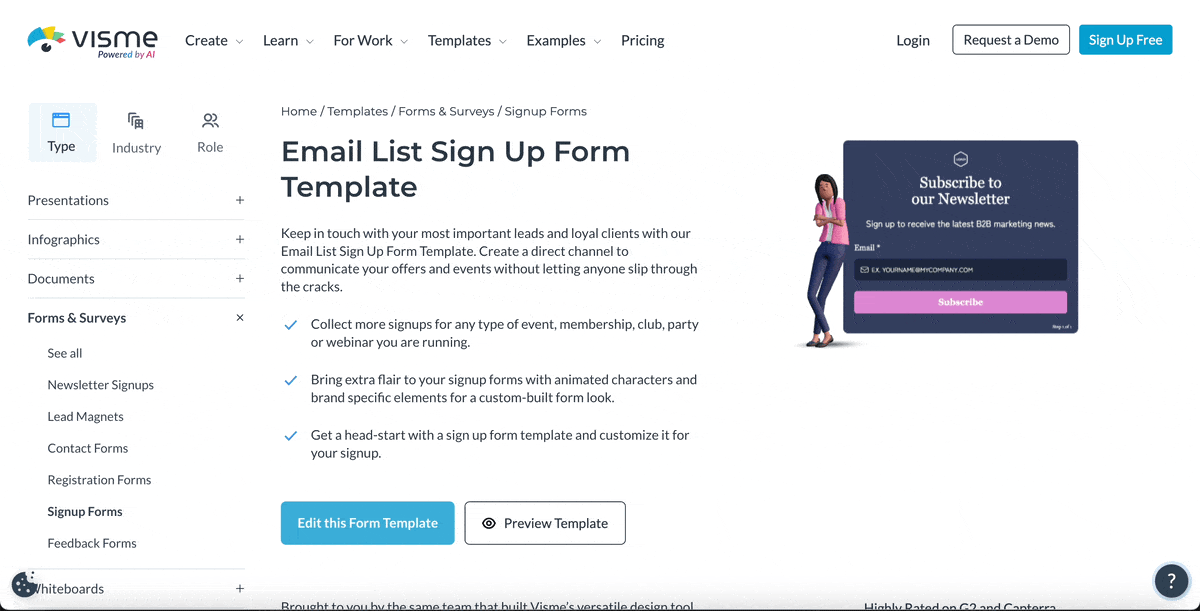
Lead Conversion: Key Metrics, Calculations & Strategies


Generating leads is tough, but actually converting those leads into paying customers? That’s even more challenging.
Studies show that 96% of people who visit a website are not ready to buy. Lead conversion is all about convincing these potential customers to hit the purchase button.
However, optimizing your lead conversion rate can be tricky. You have to track the right metrics, know how to crunch the numbers and implement strategies to nurture more prospects into buyers.
This guide will break it all down in a way that's easy to understand. You'll learn what lead conversion is, why it matters and how to calculate your lead conversion rate. We’ve also included tips and strategies to improve your lead conversions.
Lead conversion is the process of turning potential customers, or leads, into actual buyers. It’s a critical step at the bottom of the sales funnel where prospects are ready to make a purchase.
But how do leads get there? Businesses use various lead nurturing strategies like targeted content, emails, sales conversations to guide leads down the funnel from initial interest until they’re primed with the means and motivation to buy.
The better you can convert those leads into customers, the more revenue growth you’ll see. That's why analyzing and improving your lead conversion rate is so important. It lets you optimize your marketing and sales process to attract and convert as many qualified leads as possible.
The average lead conversion rate sits anywhere between 2% and 5% for most industries.

So, if your lead conversion rates are anything above 5%, you're doing great.
However, the lead conversion rate by industry can vary. It can also vary based on factors like target audience, marketing channels, product/service value, sales processes and competition.
For example, companies selling low-ticket items like hair accessories or clothing are likely to experience higher conversion rates than brands selling luxury goods or enterprise software.
That’s because buying expensive products or services often requires more financial risk and decision-making effort from the customer.
Converting more leads can help your business in more than one way. Here’s why you need to take your lead conversion strategy seriously:
Made with Visme Infographic Maker
Improving lead conversion requires you to first analyze where you stand. This means tracking several marketing and sales metrics to understand where leads are coming from, what actions they’re taking, how expensive they are to your business, how well they’re converting and more.
Below are the top lead conversion metrics you need to keep an eye on:
To measure the effectiveness of your lead nurturing efforts, you need to calculate the lead conversion rate. This metric shows the percentage of leads who convert into customers by taking the desired action (e.g. buying a product or subscribing to a service.)
The lead conversion rate formula below can help you calculate this metric:
Lead conversion rate (%) = (Number of customers / Number of leads) x 100
To calculate the lead conversion rate, you need to divide the total number of customers by the total number of leads you acquired during a certain period of time and then multiply the result by 100 to get a percentage.
For example, if a newsletter form on your website received 1,000 signups in the last month, and 50 of those subscribers went on to purchase a product from your business, your lead conversion rate would be calculated as:
Lead conversion rate = (50 customers / 1,000 leads) x 100 = 5%
Not all leads are created equal. Some are going to bring more value to your business than others. You need to identify those leads and focus most of your efforts in converting them into your customers for higher ROI in the long run.
One way to do that is to visualize your target audience. B2B companies, for example, can create Ideal Customer Profiles (ICPs).
Sales ICPs are hypothetical types of clients that have all the qualities of your most valuable customers. These are the accounts you want to go after. Visualizing their characteristics like industry, business size, number of employees, location and more can help you tailor your strategies effectively.
If you’re a B2C company, you’re going to be selling directly to the end user. In that case, it makes sense for you to create buyer personas instead.
Ask yourself:
Here’s a buyer persona template you can customize and use for your own business:
Conduct interviews and surveys, and dig into your analytics to find this information. Once you’ve narrowed down your audience, you can now develop content that resonates with them and directly solves their pain points.
Since these leads are already vetted as more likely to buy from your brand than others, they’ll be easier to move further down the funnel and convert into customers.
Narrowing down your audience and focusing on ICPs is one thing. Creating targeted content that speaks to them is another. So, what type of content can you create to drive more lead conversions?
Here are some ideas:
Remember—leads have different needs and goals at each stage of the conversion funnel. That’s why you need to be mindful of what content you share with them at various touchpoints.
For example, a lead who has just entered your funnel might not know much about your project management software. In fact, all they’re probably looking for at that stage is some help with understanding a concept, like Agile or sprints.
Peppering them with product demos or case studies at this point might not convert them. What they really need is a how-to or informative blog post that educates them about Agile principles and components.
Once they’re ready to consider software that helps them implement Agile project management, they’ll be likely to turn to you and that’s when you follow up with content like tutorials, product comparisons, case studies and demos.
Here’s a case study template from Visme you can use to convert leads:
While mastering lead conversion takes effort, you don't have to do it alone. Visme is an AI-powered content creation platform that equips marketing and sales teams with powerful visual tools to improve their lead conversions.
Create high-converting lead magnets like ebooks, whitepapers, and infographics, or sales presentations without design expertise. Bring numbers and statistics to life with data visualization tools. Make your content stand out with built-in icons, stock photos and videos.
You can also craft engaging videos, GIFs and graphics to nurture leads through stunning visual content. Embed animation and interactivity like links, surveys, CTAs and more into your content to capture leads effortlessly.
Email marketing is one of the most popular ways to nurture leads to sales. It’s been around for decades and has been proven to work for both B2B and B2C businesses.
But sending emails just like any other brand won’t help you stand out. In fact, generic emails might not even get opened or read. You actually risk being marked as spam.
The solution is to personalize your emails as much as possible. Now, this doesn’t just mean addressing subscribers by their names—although that’s also a good way to start.
True email personalization goes beyond first and last names. Go through the data you have on hand, like dates of birth, gender, subscriber location, browsing history, purchase history and any other information they’ve shared with your company
Use these insights to segment subscribers and create personalized email designs and messages that truly resonate with each segment. For example, you might create a segment of marketing managers from tech companies with 50-200 employees who have previously downloaded an ebook on social media marketing strategies.
You could invite these people to an upcoming webinar on "Advanced Social Media Tactics for Tech Startups" along with a special offer for a free one-on-one consultation with your team. By addressing their specific interests and pain points, you’re more likely to engage these leads and convert them into customers.
Pro Tip: Create engaging email signup forms with Visme. Need more data for personalization? Add more fields easily using the drag-and-drop form builder, such as dates of birth, location or favorite product.
Part of effective lead nurturing is taking the time to truly listen and understand each prospect's situation through one-on-one conversations. Don't just rapidly fire off a sales pitch. Instead, ask thoughtful questions to learn about their unique challenges, goals and needs.
Pay attention to their responses, concerns or objections. Then tailor your solution to directly address those pain points. This builds trust by positioning your business as a knowledgeable expert that genuinely cares about helping its clients rather than just making a sale.
Active listening allows you to offer honest advice and recommendations they'll appreciate. It’s how you build real connections with leads and guide them effectively towards conversion.
Pro Tip: Part of active listening is proactively reaching out for feedback and then acting on it. Visme’s feedback forms allow you to understand the customer experience at various points of the journey, such as interacting with your website, after a live support chat or after using your product for a while.Here’s a template you can customize right away:

In most cases, your website is a lead's first interaction with your brand. So, it better provide an awesome experience. Audit your site to ensure it's intuitive and easy to navigate with a logical flow and clear calls-to-action.
Strategically place lead forms and popups to collect valuable information along the user's journey. Identify and remove any points of friction that might cause confusion or abandonment.
Visme’s forms, for example, are non-intrusive, interactive and proven to drive 2x more newsletter signups and up to 3x more visitor-to-lead conversions. Use characters, animations and your brand colors to make your forms look amazing and fun to fill out.

The best part is that you can track form analytics right inside Visme—view form submissions, average completion time, devices and individual response data.

Visme also connects seamlessly with your CRM, email marketing and analytics tools. This helps you leverage marketing automation, behavior tracking and data-driven insights to continually optimize your conversion strategies.
Finally, distribute your Visme forms easily by embedding them anywhere online, adding them to a QR code or sharing them directly with a link.

Small UX improvements like fast load times, mobile-friendliness and visually appealing designs can substantially boost conversions too. Make it as easy as possible for interested visitors to find what they need and easily convert into leads when they're ready.
While personalization is powerful, doing everything manually isn't scalable. That's where marketing automation comes in. Set up automated workflows that trigger based on a lead's specific behavior and interactions.
For instance, if someone downloads a case study on your product's reporting features, they could automatically be enrolled into an email sequence showcasing more powerful reporting capabilities and use cases.
You can also use automation to send timely reminders, product updates or special offers to reengage inactive leads. The key is to reach out with the right message at the right time to keep prospects moving toward conversion.
At the end of the day, your analytics data should be driving your lead conversion efforts, not guesswork. Study metrics like traffic sources, conversion rates by channel or content piece, and lead-to-customer conversion rate.
Notice any recent dips or long-term lags and investigate the potential root causes. Is a new website element negatively impacting UX? Is a particular lead magnet underperforming? Is there a breakdown at some stage of the nurturing process?
Draw insights from your data over time to pinpoint issues, iterate solutions and continuously improve your conversion rates.
For example, if you’re using Visme forms, you can track data like the number of form completions and devices used to tailor your form design and experience.
People trust other people over businesses—that’s just how it is, especially when we’re all constantly being bombarded with ads and marketing messages on every channel.
In fact, BrightLocal’s survey shows as much as 97% of consumers read online reviews before making a purchase. For lead conversion, leveraging social proof is more important than ever.
Social proof comes in various shapes and forms, such as:
Collect reviews via feedback forms or pull in positive reviews from third-party sites like Trustpilot or G2. Then, showcase them on your website or social media. Send relevant case studies and testimonials to clients through email or during sales conversations.
Social proof can build trust and remove any doubts about quality or expectations in the minds of potential customers. It shows leads that others like them are happy with your business. This helps them arrive at a purchase decision and convert faster.
The lead scoring conversion rate (or conversion rate by lead score) measures the percentage of high-scored or low-scored leads that successfully convert into customers. It helps you evaluate the effectiveness of your lead scoring methods.
Considering the average lead conversion rate across most industries lies between 2% and 5%, a 20% conversion rate is excellent and indicates a highly effective sales funnel.
Considering the typical lead conversion rate is between 2% and 5%, a 30% conversion rate is very high and exceptional. Few businesses are able to consistently achieve this rate.
After a lead converts, they become a paying customer. Companies then focus on customer onboarding, retention, upselling/cross-selling and maximizing customer lifetime value.
To calculate the conversion rate, divide the total number of conversions or customers by the total number of leads and multiply the result by 100.
Conversion rate = (Number of conversions / Total leads) x 100.
For example, if 25 leads converted out of 500 total leads, the conversion rate is (25/500) x 100 = 5%.
There’s no one way to calculate lead scores. You need to factor in your leads’ typical demographics, interests, behavior and other characteristics to gauge their readiness to buy at each stage of the journey.
Leads are prospective buyers who’ve expressed interest. Conversion leads are those same leads after they’ve been qualified and converted into actual paying customers.
Optimizing lead conversion can drive sustainable growth for your business and maximize your marketing ROI. By understanding the right metrics, calculations and strategies, you can unlock game-changing insights to nurture more prospects into paying customers.
But you don’t have to go at it alone. Level up your lead conversion strategy with Visme. Create targeted, engaging content for multiple channels, design interactive forms, share and publish your projects online, track analytics and more.
Better yet, work on projects with your team and bring marketing and sales departments together using Visme’s collaboration tools and workflows. Finally, align all content with your company’s style guide using the brand design tool.
Ready to start converting more leads? Check out our lead forms or find out more about how Visme for sales can help your team achieve their goals.
Improve your data collection from emails, leads, to surveys and more, by using beautifully designed forms that convert up 2X better.
Signup Free